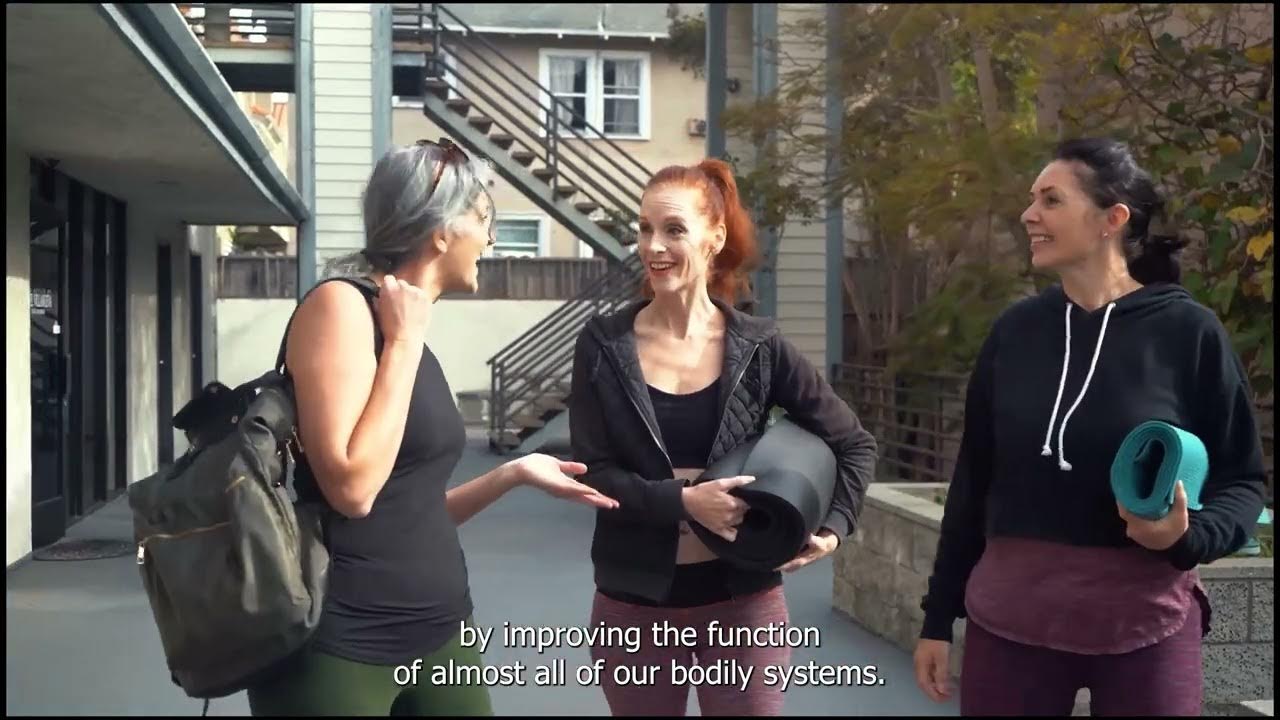PE & Health 11 LESSON 1: Aerobic, Bone Strengthening Muscle Strengthening
Summary
TLDRIn this physical education and health class, Sir Justin Romer introduces the concepts of physical activity and exercise, emphasizing their importance for health and survival. He differentiates between the two, explaining that physical activity encompasses all bodily movements, while exercise is a subset aimed at developing specific body parts. The class explores four domains of physical activity: occupational, domestic, transportation, and leisure, with exercise falling under leisure. The instructor also discusses three main types of physical activities: aerobic, muscle strengthening, and bone strengthening, each with its benefits. A standard guideline for physical activity amounts is provided, tailored to different age groups.
Takeaways
- 🏋️♂️ Physical activity and exercise are essential for health, with physical activity being any bodily movement and exercise being a subset of physical activity that involves structured and purposeful training.
- 🔍 The script differentiates between physical activity and exercise, emphasizing that while all exercises are physical activities, not all physical activities are exercises.
- 🏡 There are four domains of physical activity: occupational, domestic, transportation, and leisure (pleasure), each representing different contexts and purposes for physical movement.
- 💼 Occupational physical activity is not limited to work but includes any movement associated with one's role in society, such as a student taking notes or moving around.
- 🏠 Domestic physical activity encompasses all movements performed at home, like doing household chores or laundry.
- 🚶♂️ Transportation physical activity involves movements for traveling from one place to another, which could be walking or using various modes of transport.
- 🏊♀️ Exercise is considered a leisure activity, typically performed during free time and aimed at developing or maintaining specific parts of the body.
- 🏃♂️ Aerobic activities are those that increase heart and lung function, like swimming and basketball, and are crucial for cardiorespiratory fitness.
- 💪 Muscle-strengthening activities, such as weightlifting and bodyweight exercises, aim to improve muscle strength and power.
- 🦴 Bone-strengthening activities are designed to improve bone health and are often similar to muscle-strengthening exercises due to the connection between muscles and bones.
- ⏱ The script provides guidelines for the amount of physical activity needed based on age, recommending 60 minutes of physical activity three times a week for children aged 5 to 17.
Q & A
What is the main difference between physical activity and exercise?
-Physical activity refers to any bodily movement, including gestures and facial expressions, while exercise is a subset of physical activity that is structured and done with the intention to develop or maintain certain parts of the body.
What are the four domains of physical activity mentioned in the script?
-The four domains of physical activity are occupational, domestic, transportation, and leisure (pleasure).
Can you provide an example of an occupational physical activity?
-An example of an occupational physical activity is a teacher checking test papers or climbing stairs in a school.
What is considered a domestic physical activity?
-Domestic physical activities include movements done at home, such as washing dishes, doing household chores, or doing laundry.
How does transportation physical activity differ from other types?
-Transportation physical activity involves movements associated with moving from one place to another, which can include walking, riding a vehicle, or climbing stairs to board public transport.
What are leisure or pleasure physical activities?
-Leisure or pleasure physical activities are those done during free or vacant time, such as playing sports, video games, reading, or watching television.
Why is it important to differentiate between physical activity and exercise?
-Differentiating between physical activity and exercise helps to understand the specific types of movements and their purposes, whether it's for daily tasks, structured fitness, or leisure.
According to the script, when can a physical activity be considered an exercise?
-A physical activity can be considered an exercise when it is performed regularly and is designed to develop or maintain a certain part of the body, such as muscle or bone strength.
What are the three main types of physical activities discussed in the script?
-The three main types of physical activities are aerobic, muscle strengthening, and bone strengthening.
What is the purpose of aerobic activities?
-Aerobic activities are designed to improve cardio and respiratory endurance, such as playing sports or swimming.
How do muscle strengthening activities benefit the body?
-Muscle strengthening activities improve muscle strength and power, which can also lead to better bone health since muscles are attached to bones.
What is the recommended amount of physical activity for children aged 5 to 17 according to the script?
-Children aged 5 to 17 should perform at least 60 minutes of physical activity three times a week.
Outlines

This section is available to paid users only. Please upgrade to access this part.
Upgrade NowMindmap

This section is available to paid users only. Please upgrade to access this part.
Upgrade NowKeywords

This section is available to paid users only. Please upgrade to access this part.
Upgrade NowHighlights

This section is available to paid users only. Please upgrade to access this part.
Upgrade NowTranscripts

This section is available to paid users only. Please upgrade to access this part.
Upgrade NowBrowse More Related Video

Grade 8 PE & Health Q1 Ep 3 Plan, Prepare and Act it Out / Importance of Sexuality to Family Health

Aktivitas Fisik dan Olahraga

Top Jobs for Kinesiology Majors (5 HIGH PAYING JOBS)

Physical activity versus exercise

Educação Física: Saúde e Atividade Física

PRINCÍPIOS DA GINÁSTICA | EDUCAÇÃO FÍSICA | 1ª Série
5.0 / 5 (0 votes)